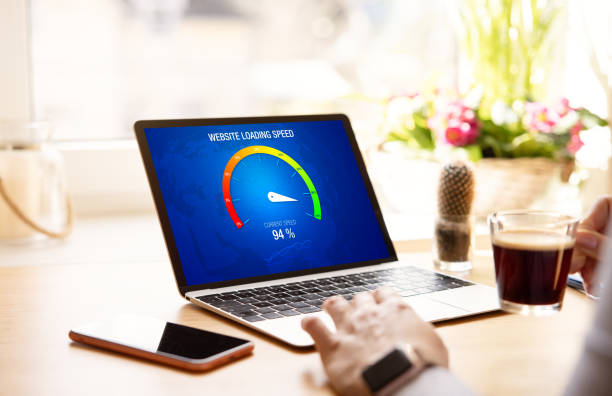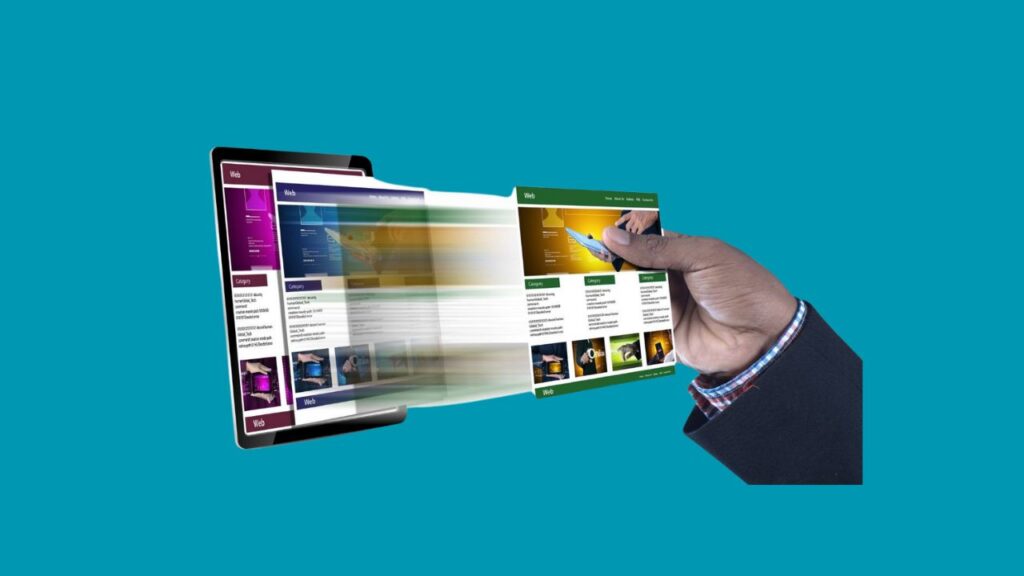In today’s fast-paced world, Website Speed is everything. Imagine walking into a shop, and it takes forever for someone to assist you—frustrating, right? The same goes for online visitors. A slow WordPress website frustrates users, and if you don’t fix it, they may leave and never return. In fact, research shows that 40% of visitors abandon a website if it takes longer than three seconds to load! This not only affects your traffic but also your revenue and brand trust.

But don’t worry—you’re in the driver’s seat! Learning how to increase your WordPress website speed and performance doesn’t require complex coding knowledge. By implementing a few effective strategies, you can create a lightning-fast website that offers users a smooth, seamless experience.
Let’s dive into the steps you can take to how to increase your WordPress website speed and performance!
Why Is Website Speed So Important?
Before we dive into the solutions, let’s discuss why Website Speed is so crucial. For one, your website’s performance directly impacts user experience, SEO rankings, and conversion rates. Picture this:
Imagine walking into your favorite coffee shop, only to stand in line for 10 minutes before someone takes your order. You’d probably leave, right? The same happens when users land on a website that takes too long to load. According to Google, page speed has been a ranking factor since 2018. This means that faster websites rank better on search engine results pages, while slow websites struggle to stay visible.
Here are some eye-opening stats:
- Google says that 53% of mobile users will abandon a site that takes more than three seconds to load.
- Amazon calculated that just a one-second delay could cost them $1.6 billion in sales annually.
- Mozilla saw a 60 million download increase when they reduced their load time by 2.2 seconds.
Clearly, speed affects traffic, SEO, and revenue. If your website is slow, you’re essentially giving potential customers to your competitors. Now, let’s get into how to increase your WordPress website speed and performance.
Step 1: Choose Reliable Hosting for Speed
Your WordPress Hosting is the foundation of your website’s performance. If you’re using shared hosting, your website is competing with hundreds of other websites for the same resources. This is like trying to enjoy a peaceful dinner in a crowded restaurant—it just doesn’t work.
Instead, invest in Managed WordPress Hosting or Cloud Hosting. For example, services like Cloudways or WP Engine offer optimized servers specifically for WordPress, leading to faster load times, better uptime, and improved overall performance.
Anecdote:
Consider this: John, a business owner, noticed his website was lagging, and customers were complaining. After switching from shared hosting to Cloud Hosting, his website load time improved drastically, and bounce rates plummeted. John now has faster performance and happier customers.
Step 2: Enable Caching for Faster Load Times
Another game-changer when learning how to increase your WordPress website speed and performance is enabling page caching. Caching creates a static version of your site, meaning visitors don’t have to wait for the page to rebuild every time they visit.
Tools like WP Rocket or W3 Total Cache can enable caching and automatically improve page load speeds.
How it works:
- Visitor A requests a page. The server builds it.
- For Visitor B, the cached version of the page is loaded instantly!
Step 3: Use a Content Delivery Network (CDN)
To further boost Website performance, using a Content Delivery Network (CDN) is essential. A CDN like Cloudflare or KeyCDN stores your website’s content across multiple servers around the world. This way, when a user visits your website, the content is delivered from the closest server, reducing loading time significantly.
For example, if your server is based in New York and someone from Tokyo visits your website, a CDN will deliver content from a nearby server in Asia, speeding up the load time.
Step 4: Optimize Images Without Losing Quality
Images are an integral part of any website, but large, unoptimized images can significantly slow it down. The solution is to compress images without sacrificing quality. Using a plugin like Smush or ShortPixel can compress your images and speed up loading times.
Pro Tip:
How To Increase Your WordPress Website Speed And Performance. Use the appropriate image format—JPEG for photos, PNG for graphics, and WebP for modern browsers.
Step 5: Minify CSS, HTML, and JavaScript
One of the main cause because of CSS, HTML and Java Script etc. so, “Discover how to increase your WordPress website speed and performance with proven optimization techniques for a faster, more efficient site.” Minification involves reducing the size of your website’s CSS, HTML, and JavaScript files by eliminating unnecessary spaces and comments. This can make your website load faster without affecting its appearance.
Plugins like Autoptimize can help you minify your website’s code and ensure it loads quickly and efficiently.
Step-by-step:
- Install Autoptimize.
- Go to Settings and check the boxes to minify CSS, HTML, and JavaScript.
- Save the settings and clear the cache!
Step 6: Clean Up Your Database
As your website grows, so does your WordPress database. It gets cluttered with unnecessary data such as post revisions, spam comments, and old drafts, all of which slow down your website. so then discover how to increase your WordPress website speed and performance with proven optimization techniques for a faster and more efficient site.. To fix this, regularly clean up your database using tools like WP-Optimize or Advanced Database Cleaner.
Step 7: Use a Lightweight WordPress Theme
Not all themes are created equal. Some come loaded with unnecessary features that slow down your site. If you want to improve how to increase your WordPress website speed and performance, choose a lightweight, performance-optimized theme like GeneratePress or Astra.
These themes are designed for speed and minimal bloat, ensuring that your website performs at its best.
Step 8: Limit Plugins and Only Use Essential Ones
While plugins can enhance your website’s functionality, how to increase your WordPress website speed and performance, they also come with a cost—too many can slow down your site. Stick to essential plugins and regularly delete unused plugins. If you don’t need a feature, consider skipping the plugin altogether.
For instance, instead of using separate plugins for SEO, caching, and minification, consider using an all-in-one solution like WP Rocket.
Step 9: Lazy Load Images and Videos
Lazy loading is a technique where images and videos only load when they are visible on the screen. This reduces the initial load time of a webpage. You can use the Lazy Load plugin to easily enable this feature on your WordPress site.
This not only improves page speed but also helps users on slower networks.
Step 10: Regularly Monitor Your Website’s Performance
Finally, regularly monitor your website’s speed using tools like GTmetrix or Google PageSpeed Insights. These tools provide insights into how well your site is performing and offer actionable recommendations for how to increase your WordPress website speed and performance, improvement.
Conclusion: Take Action Now!
There you have it—a comprehensive guide on how to increase your WordPress website speed and performance. By choosing reliable hosting, enabling caching, using a CDN, optimizing your images, and following the steps outlined above, you can drastically improve your site’s performance.
Remember, every second counts. A faster website means higher SEO rankings, increased conversions, and better user experience. Don’t let a slow website hurt your business. Take action today and start implementing these strategies to give your visitors the fast, seamless experience they expect. “Discover how to increase your WordPress website speed and performance with proven optimization techniques for a faster, more efficient site.”
Now, how to increase your WordPress website speed and performance and how will you optimize your WordPress site today?
If you like to speed up your WordPress admin dashboard then click here.
Frequently Asked Questions
1. Why is WordPress so slow?
WordPress can feel slow for several reasons. The most common culprits include using a low-quality hosting provider, having too many plugins installed (especially poorly coded ones), unoptimized images, large files, and poorly designed themes. Other factors include not using caching, running too many background processes, or using heavy scripts. Additionally, not keeping your WordPress database clean can also significantly slow down your site.
2. How do I test my WordPress site speed?
Testing your WordPress site speed is easy with free online tools. Some of the best options are:
- Google PageSpeed Insights – Provides suggestions on how to optimize your website for both desktop and mobile.
- GTmetrix – Offers detailed reports on loading times, performance scores, and recommendations.
- Pingdom Tools – Measures your site’s load time and grades its performance.
- WebPageTest – Gives an in-depth analysis of your website’s speed and identifies the areas causing delays.
To test, simply enter your website’s URL, choose a location, and run the analysis. These tools will give you insight into elements like page size, load time, and suggestions for improvement.
3. How do I increase traffic on WordPress?
Increasing traffic on your WordPress site involves a combination of SEO, content marketing, and user engagement tactics:
- Optimize your content for search engines by using the right keywords, optimizing meta descriptions, and improving readability.
- Consistently publish high-quality content that provides value to your audience.
- Promote your content on social media and engage with your followers.
- Use email marketing to bring visitors back to your site.
- Optimize for mobile devices, as mobile traffic is crucial for better rankings.
- Implement internal linking to guide visitors to other parts of your site and boost SEO.
By focusing on these areas, you’ll steadily increase your site traffic over time.
4. How can I make my website speed faster?
Here are some actionable steps to speed up your website:
- Choose a reliable hosting provider – Managed WordPress Hosting is often faster and more secure.
- Enable caching using plugins like WP Rocket or W3 Total Cache to store static versions of your pages.
- Use a Content Delivery Network (CDN) – Services like Cloudflare deliver content from servers close to your users, improving load times.
- Optimize images by compressing them using tools like Smush or ShortPixel.
- Minify CSS, JavaScript, and HTML to reduce the size of these files and speed up loading times.
- Limit plugins and only use essential, well-coded ones.
- Regularly clean up your database using plugins like WP-Optimize.
5. How do I manually optimize my WordPress site?
You can manually optimize your WordPress site by following these steps:
- Compress your images before uploading to WordPress. Use tools like TinyPNG or ImageOptim to reduce the file size without losing quality.
- Minify CSS, JavaScript, and HTML files. Use online tools like Minify CSS or Minify JS to remove unnecessary characters, line breaks, and spaces from your code.
- Delete unused plugins and themes to reduce the load on your website.
- Clean your WordPress database by removing old post revisions, spam comments, and unnecessary data manually using phpMyAdmin.
- Implement lazy loading for images and videos so they load only when a user scrolls down to view them.
- Limit the number of external scripts and resources (e.g., fonts, analytics, ads) loaded on your site.
6. Why is speed important for your WordPress site?
Speed is crucial for several reasons:
- User Experience: Visitors expect a fast-loading site, and if it takes more than a few seconds to load, they’re likely to leave (high bounce rates).
- SEO: Search engines like Google use page speed as a ranking factor. Faster sites rank higher in search results, bringing in more organic traffic.
- Conversions: A faster website keeps users engaged and encourages them to browse further, leading to higher conversion rates.
- Mobile Optimization: As more users access the internet via mobile, site speed is even more important for maintaining a positive mobile user experience.
In essence, a fast site is good for SEO, user engagement, and ultimately, your bottom line.
7. How do I increase SEO on my WordPress site?
To increase SEO on your WordPress site, follow these best practices:
- Optimize your content for keywords that your audience is searching for. Use tools like Yoast SEO or Rank Math to ensure your content is SEO-friendly.
- Use SEO-friendly URLs – Create short, descriptive URLs that include your primary keyword.
- Create high-quality content that answers user questions and provides value.
- Use internal and external links to provide users with further reading and build your site’s authority.
- Ensure your website is mobile-friendly since Google uses mobile-first indexing.
- Optimize your images by compressing them and using descriptive alt text.
- Improve page load times by following the speed optimization steps outlined earlier.
8. How do I make my WordPress site more responsive?
To make your WordPress site more responsive, you need to ensure that it looks great and functions well on all devices—desktops, tablets, and smartphones:
- Choose a responsive theme such as Astra or GeneratePress.
- Use responsive design techniques like fluid grids and flexible images that automatically adjust based on the screen size.
- Optimize images for different devices using responsive images and media queries.
- Use a mobile-first approach in designing your site and always test your website on multiple devices to ensure it works perfectly.
9. How to optimize WordPress website speed without plugins?
If you want to optimize your WordPress website speed without plugins, here’s how:
- Choose a faster hosting provider – Managed WordPress Hosting can make a big difference.
- Optimize images manually by compressing them before uploading to WordPress.
- Minify your CSS, HTML, and JavaScript using online tools.
- Use a CDN to deliver your content faster to users across the globe.
- Enable browser caching by adding rules in your .htaccess file.
- Limit the number of external scripts such as third-party fonts, embeds, and ads.
- Regularly clean your database manually via phpMyAdmin to remove unwanted data and improve performance.
10. How can I improve my WordPress speed and performance?
Improving your WordPress speed and performance involves a combination of factors:
- Upgrade your hosting to a Managed WordPress Hosting or Cloud Hosting service.
- Enable caching to store static versions of your pages and reduce load times.
- Use a CDN to speed up content delivery.
- Compress and optimize images before uploading to reduce their file size.
- Minify your website’s CSS, JavaScript, and HTML to eliminate unnecessary code.
- Limit the number of plugins to only the essential ones.
- Choose a lightweight theme to reduce the bloat that can slow down your site.
Regularly monitor your site speed using tools like GTmetrix or Google PageSpeed Insights to identify issues and optimize accordingly.



